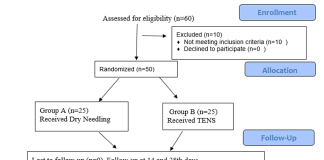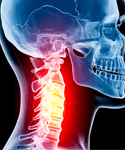(The Conversation is an independent, nonprofit source of news, analysis, and commentary from academic experts.)
Mark C. Billet, University of Michigan
(THE CONVERSATION) The opioid crisis has resulted in more than 500,000 deaths from overdose in the past two decades. The federal government, states, and other entities have filed lawsuits against drug manufacturers, suppliers, and pharmacies in an attempt to remedy the harm and suffering caused by inappropriate opioid prescribing practices. Billions of dollars in funding have been awarded since then, and more is likely to come.
To ensure these funds are used in areas relevant to opioids, political and public health groups, led by experts from Johns Hopkins University, Harvard University, and other organizations, have proposed a framework in which to prioritize use of the Money are listed. But none of them address the needs of a critical group: patients suffering from acute and chronic pain.
Gaps in pain care and management, one of the key factors that made the inappropriate prescription of opioids possible in the first place, persist. I am a specialist in pain medicine. My colleagues, law professor Barbara McQuade and anesthetist Chad Brummett, and I believe these funds could be used in three ways to improve pain management and fill resource gaps for patients with acute and chronic pain.
1. Comprehensive pain management
There are two common types of pain. Acute pain is usually sharp and sudden. It is the pain typically felt after a cut or injury and helps warn the body of tissue damage. Acute pain is very common and generally goes away once the body is healed.
Chronic pain, on the other hand, persists even after the tissue has healed and the injury has subsided. When this happens, the pain can turn from a symptom to a chronic illness. Many conditions can cause chronic pain, from arthritis and migraines to fibromyalgia and nerve pain like sciatica and postherpetic neuralgia from shingles, among others. It is not always clear why acute pain becomes chronic pain.
Due to a combination of factors, newer approaches to pain management, such as the concept of the fifth vital sign, which reduced pain to a number on a scale between 0 and 10, resulted in over-reliance on medication and limited treatment approaches, all of which persist to this day.
However, the most effective chronic pain treatment usually involves therapy beyond taking tablets. Comprehensive pain therapy includes the care of a diverse team of clinicians, such as physiotherapists and pain psychologists, to name just a few. It also encompasses a range of treatment approaches and methods of treatment, including behavioral therapy, which focuses on the psychological and social aspects of pain. Complementary and integrative approaches such as acupuncture, biofeedback and yoga can also be combined with interventional approaches such as injections, dry needling and electrical stimulation.
While the right combination of therapies will depend on the individual patient, the goal is to relieve pain, help them regain their daily activities, and improve their quality of life.
This multidisciplinary and multimodal approach to pain management became less widespread due to financial pressures after the advent of managed care in the late 1980s and early 1990s. Limited access to comprehensive pain management can lead to poorer outcomes for patients. One study found that insurance policies that separate physical therapy from pain management programs result in poorer physical and psychosocial function in patients with chronic pain for up to a year after treatment than patients whose insurance covers physical therapy directly.
Promoting team-based and multidisciplinary treatment approaches could not only improve the care of pain sufferers, but also improve their accessibility outside of academic medical centers.
2. Evidence-based care models
Translating research into evidence-based care models will help provide the best possible approaches to treatment for patients with pain. These care models review the evidence from clinical trials and implement their findings to improve patient care.
For example, there is evidence that heat therapy and acupuncture are used for acute lower back pain and non-opioid pills for kidney stone pain. However, patients may not be offered these treatments, in part because of the wide variation in coverage between these treatments.
Prescribing opioids is another area where there are several gaps in the evidence for their effectiveness in treating acute and chronic pain. Until a few years ago, there was no data-driven answer as to what dose of opioids should be prescribed after common surgeries. This was based in part on the assumption that patients needed prescription opioids after certain surgeries, which is not always the case. Developing evidence-based pain management recommendations to prevent unnecessary exposure to prescription opioids remains a focus of organizations such as the Michigan Opioid Prescribing Engagement Network.
3. Research on acute and chronic pain
More research is needed to advance therapies for treating acute and chronic pain. A recently published abstract of acute pain treatments noted a lack of evidence to support current therapies for patients with sickle cell, acute nerve, and neck pain, among others.
The National Institutes of Health have increased funding for research on pain and opioids in recent years through the HEAL Initiative, a program focusing on opioid addiction and pain management. In 2019, the NIH awarded $ 945 million to projects to improve chronic pain management, reduce opioid abuse and overdose, and facilitate recovery from opioid addiction. Despite these efforts, however, significant gaps remain in both laboratory and clinical pain research.
Giving patients a seat at the table in pain
The economic impact of pain in the United States, adjusted for inflation, is estimated to be more than $ 700 billion. Slightly more than half of this is attributable to care costs, the other half to reduced productivity or incapacity for work.
[Over 100,000 readers rely on The Conversation’s newsletter to understand the world. Sign up today.]
Closing gaps in addiction treatment and overdose prevention are critical to turning the tide on the opioid epidemic. But implementing some of these three ways to improve pain management could also hurt US spending on pain. Giving patients in pain a say in how opioid lawsuit funds are distributed can help ensure that they are not forgotten.
This article was republished by The Conversation under a Creative Commons license. Read the original article here: https://theconversation.com/opioid-lawsuit-payout-plans-overlook-a-vital-need-pain-management-care-and-research-focused-on-smarter-use-of- Addictive Substances-165732.

We understand how important it is to choose a chiropractor that is right for you. It is our belief that educating our patients is a very important part of the success we see in our offices.




